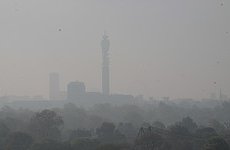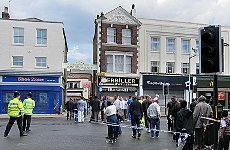LONDON could start to beat its air pollution problem within two years thanks to a next generation fabric conditioner that eats toxic, asthma-causing nitrogen dioxide gas.
Popular on LondonNet
Called CatClo, the new liquid, developed by the London College of Fashion and the University of Sheffield, is added to clothes like a regular conditioner and when those clothes are worn out on the street, they clean the air as if by magic.
The trick to the magic is that CatClo contains titanium dioxide, a substance that reacts with the nitrogen dioxide in such a way as to ‘collect’ the pollutant harmlessly on the clothes, which can then be washed as normal.
CatClo follows on the heels of another clothing-versus-air pollution solution, developed by the same team, that we reported on last year.
“Through CatClo, we aim to turn clothes into a catalytic surface to purify air,” said Professor Tony Ryan OBE of the University of Sheffield’s Department of Chemistry.
“We’re now working closely with a manufacturer of environmentally friendly cleaning products to commercialise our laundry additive.”
CatClo developers estimate that their product will hit the shelves by 2014.
“If thousands of people in a typical town used the additive, the result would be a significant improvement in local air quality. In Sheffield, for instance, if everyone washed their clothes in the additive, there would be no pollution problem caused by nitrogen oxides at all!”
What’s true for Sheffield is true for London 16 times over, given the difference in population, and our air pollution problem is more serious than the Steel City’s.
“London had the highest annual concentrations of nitrogen dioxide of any capital city in Europe in 2010, with levels comparable to Beijing,” said Simon Birkett, director of Clean Air in London.
“Air pollution is the biggest public health risk after smoking.”
It’s a good job the fashion industry is tackling the issue, as Birkett comes down hard on London Mayor Boris Johnson for sneaking his way around commitments to reduce air pollution.
“Mayor Johnson is applying pollution suppressants to reduce dangerous airborne particles (which he calls ‘dust’) in front of air quality monitors used to warn the public of smog episodes,” he said








